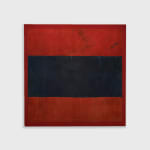Nazca Culture 100 BC-800 AD
74'8" x 74'8" in.
The sublime beauty of this example in minimalist aesthetics resonates with numerous modern explorations within recent abstract art developments, most notably the Bauhaus master weaver Anni Albers’ “Wallhanging series” in the 1930s, the American Abstract Expressionist Mark Rothko’s “Red over Dark Blue on Dark Grey" to the Concrete Art artists Max Bill.
This simplicity in this example of bold Nazca/Huari textile aesthetics exemplifies these cultures technical virtuosity in expressing abstractly the beliefs that man has the power to create order, transcend space and time in a non-representative colour field of geometrics. For, surely accustomed as we are with our late 20th century modes of perception freed from representational conventions, the visual impact of this cloth and those of the following group cannot fail to resonate with the archetypal heritage of abstraction inherent within us all.
Join our mailing list
* denotes required fields
We will process the personal data you have supplied in accordance with our privacy policy (available on request). You can unsubscribe or change your preferences at any time by clicking the link in our emails.



